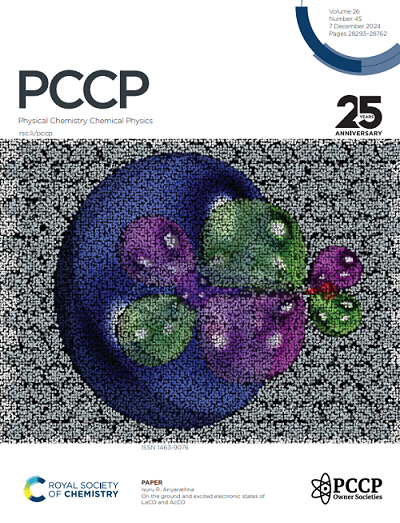Low-lying excited states of linear all-trans polyenes: the σ–π electron correlation and the description of ionic states
IF 2.9
3区 化学
Q3 CHEMISTRY, PHYSICAL
引用次数: 0
Abstract
In this work, the electronic spectra of all-trans polyenes, from hexatriene to dodecahexaene are investigated. Special attention is given to the challenging description of the ionic 11B+u state. A comprehensive wavefunction analysis of both singlet (21A−g, 11B+u, and 21B−u) and triplet excited states (13A−g and 13B−u) is performed using a range of multireference correlated methods, including multireference configuration interaction with singles and doubles (MR-CISD) including a posteriori size-extensivity Pople correction (+P), and the multireference averaged quadratic coupled-cluster (MR-AQCC) method. While covalent states are well described by multi-configurational self-consistent field (MCSCF) theory, accurately describing the ionic state requires addressing size-extensivity errors, basis set effects, and, most importantly, σ–π electron correlation. Taking these factors into account, MR-CISD+P and MR-AQCC results mutually corroborate that the ionic 11B+u state is the first vertically excited state in hexatriene and octatetraene. In decapentaene, extrapolated MR-CISD+P results indicate that the 21A−g and 11B+u states are nearly degenerate, while MR-AQCC suggests that the ionic state lies approximately 0.2 eV below the covalent state. From a wavefunction perspective, the ionic state is consistently well-represented by a single HOMO–LUMO excitation, whereas the contribution of doubly excited configurations increases with chain length for both covalent states.

求助全文
约1分钟内获得全文
求助全文
来源期刊

Physical Chemistry Chemical Physics
化学-物理:原子、分子和化学物理
CiteScore
5.50
自引率
9.10%
发文量
2675
审稿时长
2.0 months
期刊介绍:
Physical Chemistry Chemical Physics (PCCP) is an international journal co-owned by 19 physical chemistry and physics societies from around the world. This journal publishes original, cutting-edge research in physical chemistry, chemical physics and biophysical chemistry. To be suitable for publication in PCCP, articles must include significant innovation and/or insight into physical chemistry; this is the most important criterion that reviewers and Editors will judge against when evaluating submissions.
The journal has a broad scope and welcomes contributions spanning experiment, theory, computation and data science. Topical coverage includes spectroscopy, dynamics, kinetics, statistical mechanics, thermodynamics, electrochemistry, catalysis, surface science, quantum mechanics, quantum computing and machine learning. Interdisciplinary research areas such as polymers and soft matter, materials, nanoscience, energy, surfaces/interfaces, and biophysical chemistry are welcomed if they demonstrate significant innovation and/or insight into physical chemistry. Joined experimental/theoretical studies are particularly appreciated when complementary and based on up-to-date approaches.
 求助内容:
求助内容: 应助结果提醒方式:
应助结果提醒方式:


